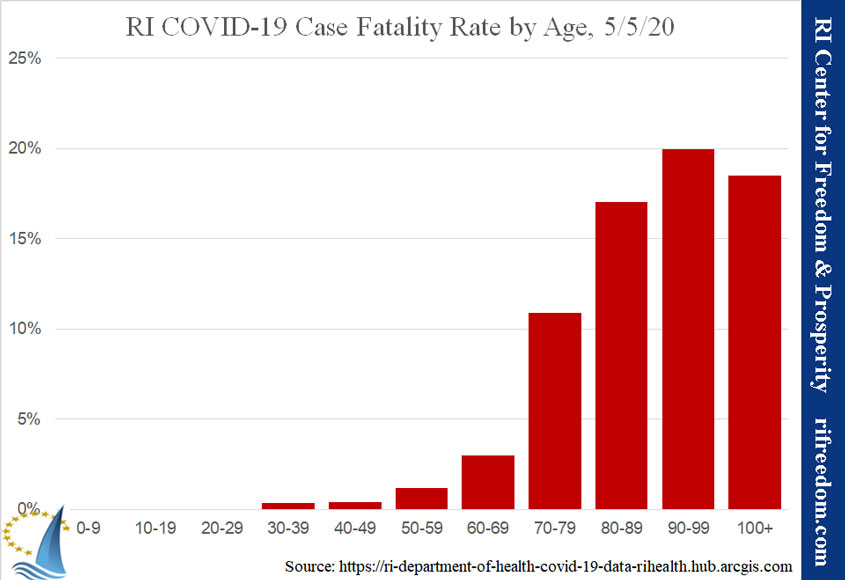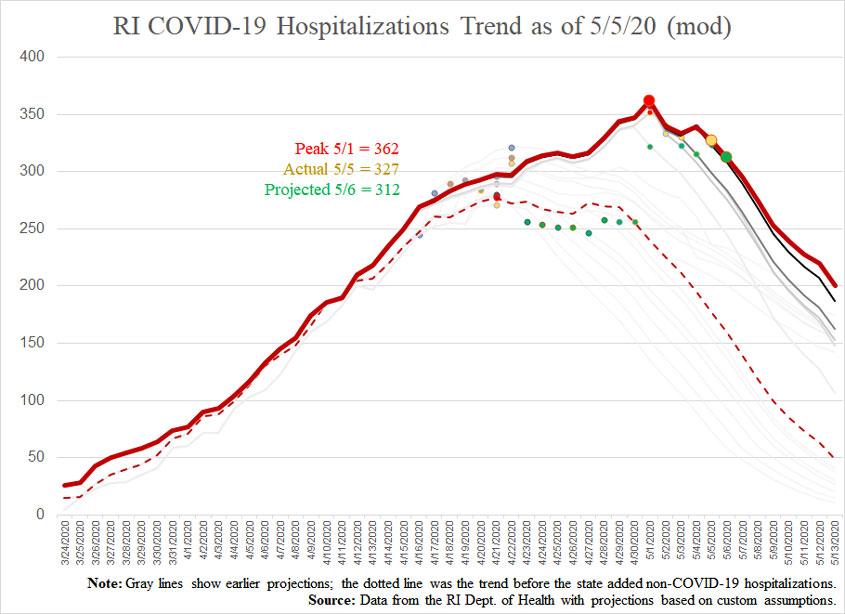A Travesty of Ages and Games with Models, 5/5/20 Data
One hesitates to speak too strongly during unsettled times, but Monique Chartier’s posts in this space yesterday (here and here) led me to ask a question. And that question leads to a conclusion that our government officials are choosing public policy very poorly in the face of COVID-19.
Maybe at the beginning of the outbreak, when there were many more unknowns, their harsh reactions seemed justified. As information has come in, however, failing to adjust course is indefensible.
Specifically, Monique pointed out that the reported case fatality rate of COVID-19 is very low, and the infection fatality rate (attempting to account for the people who have caught the disease and were never tested, probably because they had no significant symptoms) is much, much lower.
Reasonable objections to that point do exist, however. First, COVID-19 appears to spread more easily than the flu. Second, it is a new bug for which we have less immunity and fewer treatments. And third, the danger to vulnerable populations, especially the elderly, appears to be more acute than the flu. As the equation went early in this pandemic, in a nation with 330 million people, if 60% of the population catches the disease and 2% die, that’s still almost 4 million people. And if they are mostly elderly, the disease could wipe out a big percentage of our older generations.
Given what we now know, however, the idea that shutting down our entire economy and reopening it at a tip-toe pace is less and less reasonable. Consider this chart of the case fatality rate by age group in Rhode Island.

In short, there is essentially no risk of death for anybody under 30, and survival rates for those in their thirties or forties are higher than 99.5%. To give that finding a bit of context, consider the percentage of the United States labor force accounted for by each age group.

If we assume that Rhode Island’s labor force is close to the national average, we can say that around 67% of all workers are at almost no risk of death from COVID-19. It follows that many of the people who actually need to lock down and hide from COVID-19 are retired and wouldn’t lose any income at all if they had to stay home for several months. Thus, the population most at risk of the disease is least affected, economically, when we shut everything down, and those most hurt by shutting everything down are the least at risk from the disease. This is a massive and painful transfer of risk from one age bracket to another.
Carry this over to hospitalizations. While between 2.5% and 8.6% of Rhode Islanders in their twenties through their forties might end up in the hospital if they catch COVID-19, those with preexisting conditions (often being aware of those conditions) would likely account for most of those. Moreover, we are now prepared to address an increase in hospitalizations of people who are at very low risk of death.
We should also think about different age groups’ types of work. Retail and leisure/hospitality are two of the industries most affected by shutdowns, and they’ll probably be among the last to get back to normal as the governor eases restrictions little by little. Yet, employees in these industries skew even more toward the safer end of the COVID-19 spectrum.

We could keep going. As American workers move toward retirement, they are more likely to have savings and vacation days. They are also more likely to be working from home already, or to have the ability to work from home for an extended period
In summary, the Rhode Islanders most at risk of harm from COVID-19 are the least likely to be working for the bulk of their income. Those in the next age range, older workers, are more likely to be able to avoid catching the disease. Meanwhile, the workers who are most likely to come into contact with COVID-19 at work are at almost no risk of death from the disease, yet they are the most harmed by our reaction to it. (Anybody want to guess how the near-certain increase in suicides and overdoses will look from one age group to the next?)
It’s time to rethink our response to this disease. We are causing massive harm to the generations that are most vulnerable to economic restrictions in order to protect the generations who are at risk of the disease, but could be more easily protected.
As my daily RI hospitalization chart shows, we continue to move out down from the peak (even the newly-defined peak that includes people who are hospitalized for some other reason, but who test positive for the virus). We can therefore afford to move more quickly.

- Cases:
- Projection for 5/5: 9,805
- Actual for 5/5: 9,933
- Projection for 5/6: 10,098
- Hospitalizations:
- Projection for 5/5: 323
- Actual for 5/5: 327
- Projection for 5/6: 312
- Deaths:
- Projection for 5/5: 346
- Actual for 5/5: 355
- Projection for 5/6: 361




